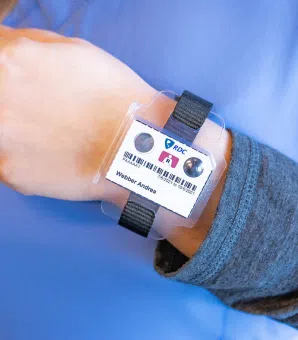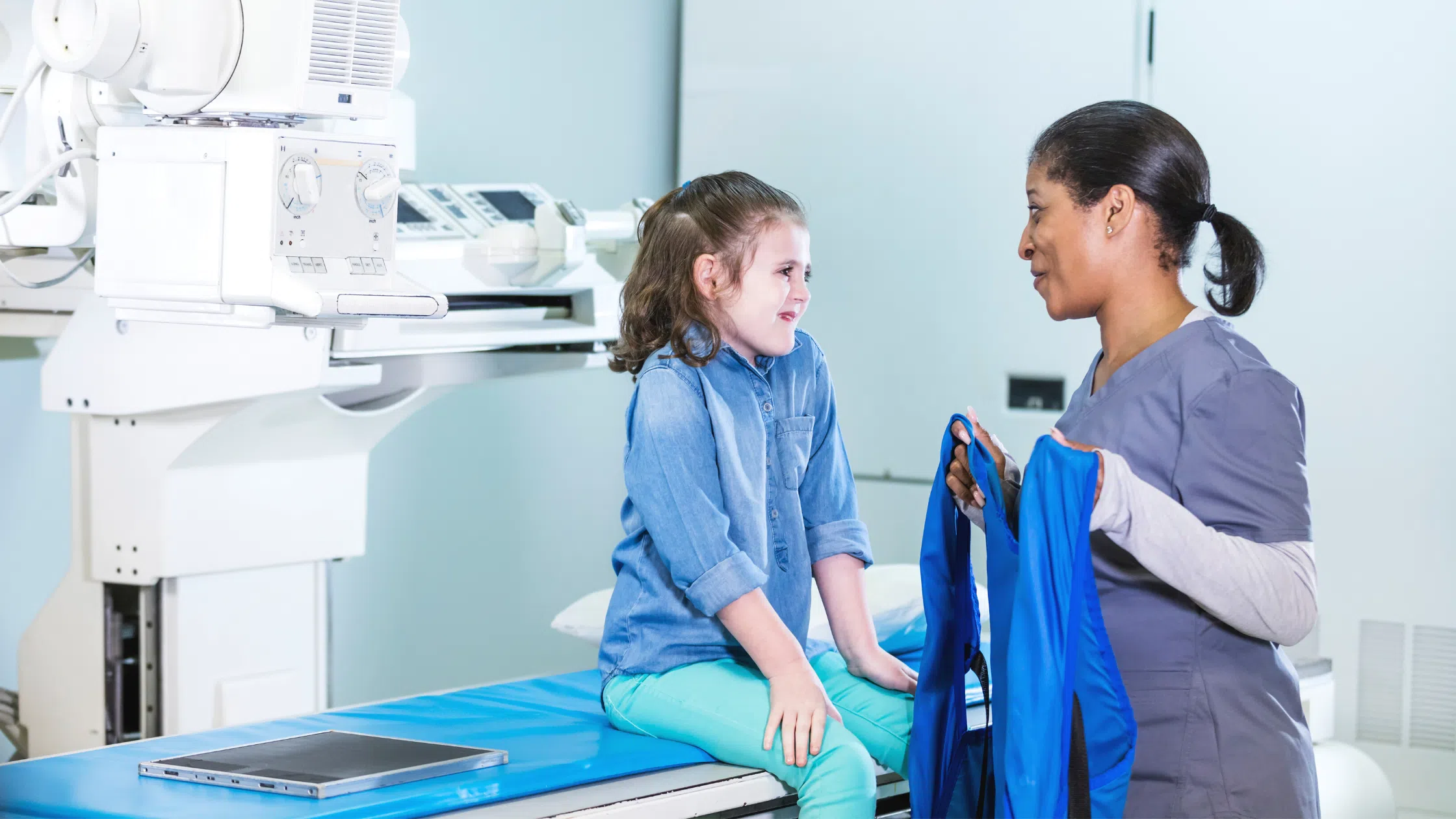
Dosimeter badge services for medical, dental, and veterinary businesses
Learn how Radiation Detection Company’s easy-to-use dosimetry solutions can boost the efficiency of your practice.

Protective aprons and shields have long been one of the most effective means to prevent radiation exposure. These instruments fall under one of the three main principles of radiation safety: shielding (more on this below).
In this article we will take an in-depth look into the radiation protective garments used to protect both personnel and patients.
Although radiation exists throughout both our environment and bodies, humans must do all they can to reduce unnecessary radiation exposure. Following the three basic tenets of radiation safety: time, distance, and shielding is the best means to do so.
Limiting the amount of time humans are exposed to ionizing radiation in turn reduces the radiation doses they receive.
The intensity and dose of radiation decreases dramatically the further you get from the source of the radiation.
Using or inserting the proper shield between yourself and a radiation source can greatly reduce or eliminate the dose received.
These three principles combine to work towards the goal of keeping radiation dose "ALARA." You'll remember that ALARA is an acronym that stands for “as low as reasonably achievable.” This simply means that the goal of any radiation safety program is to minimize direct exposure as much as reasonably possible.
You can learn more about radiation safety principles here: "Time, Distance, & Shielding: Key Radiation Protection Principles"

While lead aprons and thyroid shields are the most common form of Personal Protective Equipment (PPE) used for radiation protection from x-rays and gamma rays, there are also others. Common forms of PPE include:
Wearing a lead apron can help in radiation dose reduction. Custom lead (or lead equivalent) aprons are available for a wide range of occupational settings and tasks. These aprons are only effective when worn properly. Employers should ensure that both visual inspections and inspections by touch are performed regularly for signs of damage or prior misuse. Common signs of damage include wear and tear, holes, and cracks. Prior misuse results in deformed lead when an apron has been folded or stored improperly.
A lead thyroid collar offers additional radiation protection for the thyroid (a gland found in the front of the neck).
Lead-lined gloves offer protection from radiation workers whose hands are commonly exposed. These gloves should also be used in conjunction with some x-ray equipment if hands must be placed directly in the x-ray's field.
Leaded eye wear (lead glasses or radiation glasses) or opaque safety goggles can protect the eyes from radiation exposure.

Lead protective garments are the standard required protection for anyone exposed to radiation. The most common protective aprons are 0.5 mm thick and are made of lead or metals that have lead-equivalent thickness.
A lead apron is extremely effective at absorbing diagnostic x-rays to the parts of the body that are shielded by the apron. While their overall effectiveness is energy-dependent, it averages around 90–95 percent effective (it can be as low as 85%, and as high as 99% effective).
Proper storage and inspection (generally every 6 months - 1 year) are critical to the success of these garments. They must be inspected for cracks, creases, or holes to ensure they're able to provide adequate protection. These garments cover and protect organs, and also reduce the effective dose of exposure by as much as 16-fold.
Due to the fact that the thyroid is particularly sensitive to radiation, a thyroid shield is also a very common protective element used to prevent radiation exposure. Thyroid collars, as they are commonly called, reduce the total effective dose by a factor between 1.7 and 3.
Protective 0.15-mm lead-equivalent glasses or goggles can also be used and limit the dose to the lens of the eye by about 70%.
Lead aprons can minimize patient dose when worn properly in a diagnostic x-ray or fluoroscopy setting. Fluoroscopy is a medical procedure which creates a real-time video of the movements inside a part of the body by passing x-rays through the body over a period of time.
Lead aprons also minimize the potential for scattered radiation. Scatter radiation is radiation that spreads out in different directions from primary x-ray beam when the beam interacts with a substance (such as human tissue).
Generally, expert bodies and authorities recommend that medically indicated x-ray exposures can be performed as needed. This mindset is based on the knowledge that the benefit of the diagnostic information provided greatly outweighs any potential risk of radiation exposure. This is known as the principle of justification as defined by the International Commission on Radiological Protection (ICRP).

Protective clothing worn by radiologic technologist- those responsible for operating x-ray equipment - generally contains lead and often other metals (i.e. tin, tungsten, antimony, and/or barium) to shield the wearer from radiation and to minimize occupational exposure.
These metals are mixed with synthetic rubber or polyvinyl chloride (PVC), and two to five thin sheets of the metal and rubber/PVC combination are placed between sheets of nylon fabric that is coated with urethane. The materials are then cut into a pattern and sewn together to form a protective garment.
The levels of education and training for personnel that deal with radiation in an occupational setting should be commensurate with both the level of radiation used and the frequency of its use. Professionals involved in fluoroscopy should receive special training for these procedures. If the professional lacks training in these areas, it could quickly lead to a radiation safety issue for both personnel as well as patients.
Radiation Detection Company has 75 years of experience in assisting companies in preventing unnecessary radiation exposure. We have worked with over 31,000 companies worldwide to provide quality dosimetry services and radiation protection solutions.
Want to learn more? Please visit our Solutions page to view our full suite of offerings.
Have a question that we did not address in this article? Please take a moment to reach out to our Customer Care team, and one of our specialists will be more than happy to assist you.
Learn how Radiation Detection Company’s easy-to-use dosimetry solutions can boost the efficiency of your practice.